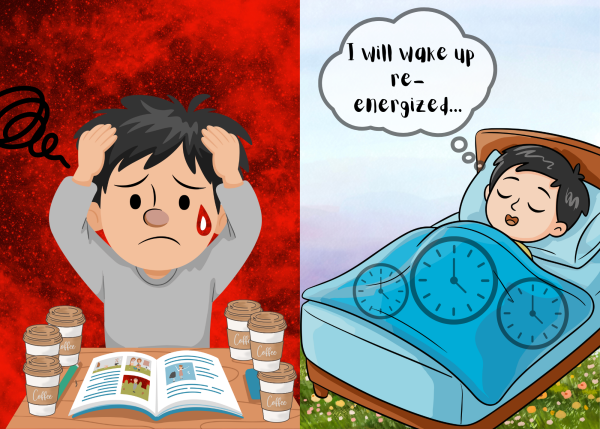Cut the confusion, not the comma: The Oxford comma is correct, clear, and concise
I went on a walk with my dogs, Grandma and Grandpa. Come meet my friend Janet, a clown and an acrobat. At the restaurant, I had a burger, fries, ketchup and ice cream. These sentences read a bit weird, right? You named your dogs Grandma and Grandpa? You have a friend Janet who’s not only a clown but an acrobat as well? You eat ketchup on your ice cream?
Try this: Add a comma before the “and” in those first few sentences. That changes the meaning, doesn’t it?
The power of the Oxford comma. The Oxford comma is the final comma in a list of items, coming right before the “and”. While it may seem insignificant as your eyes glide right over it, it is absolutely necessary to our writing and grammar. As you saw above, the Oxford comma can completely change the meaning of a sentence.
We need the Oxford comma in our writing. It’s often used in books, but for some reason, it’s not AP style. Apparently, it’s because back in the old days, newspapers thought that the final comma could be excluded to save space on the physical paper. It would only be used in need of clarification. Even AP News, the creator of AP style that is the primary style guide for journalism publications, went on Twitter to say, “We don’t ban Oxford commas! We say: If omitting a comma could lead to confusion or misinterpretation, then use the comma.”
But what constitutes clarity? This rule is so vague and subjective, we need a clear-cut one. It’s obvious that without the Oxford comma in many cases, sentences could have entirely different meanings; why not keep the rule all the time? Better safe than sorry.
It’s also a visual thing– it’s easier to see things as a list when there are commas. Sentence items need separation. The Oxford comma is, for lack of better terms, aesthetically pleasing.
Since the Oxford comma is so often used in books, many would agree that it’s necessary.
“I’m very pro-Oxford comma,” senior Alexis Chiet said. “I think it’s important to distinguish what things are grouped together in a sentence. It removes any uncertainty in a sentence.”
“I am somewhat neutral on its [the Oxford comma] meaning. I think the point of grammar and rules and language is for clarity so we can express ourselves clearly to other people, and they can understand our ideas,” English teacher Nils Peterson said. “So if the Oxford comma helps somebody understand my ideas, I’m all for it because that’s the whole reason commas and other punctuation exist.”
Peterson went on to say, “But the point of grammar is not to be needlessly complicated or just have stupid rules that get in our way. So if the expert comment in a situation is not needed, and it’s just something to catch somebody or snag them, then that’s silly. Grammar is there to help us, not to hurt us, as much as that seems crazy.”
However, North Star News’s very own Editor-in-Chief Liv Frey is very much anti-Oxford comma, which is reflected in the publication’s story format.
“I think the Oxford comma is redundant. It’s up to the writer to make sure that their grouping is logical and the words flow,” Frey said.
At the end of the day, the Oxford comma is very much necessary to our understanding of sentence structure. “Jenny likes to cook, her friends and her family.” That last comma can save lives.

Penelope is a senior, and this is her fourth year on North Star News. She's inspired by journalist icons like Carrie Bradshaw and Andie Anderson....











